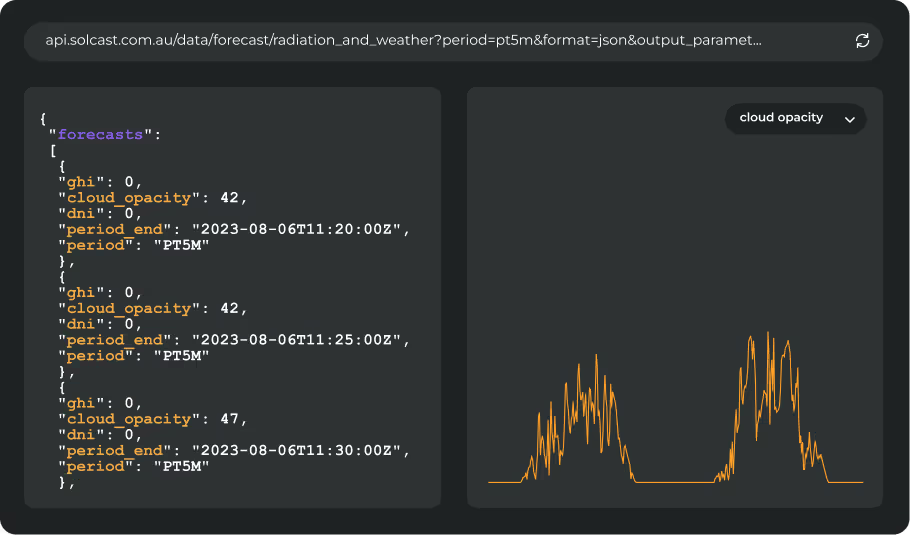As we reported in PV Magazine, most of East Asia saw sunny skies at the start of 2025. This was particularly intense in large parts of southern and eastern China with irradiance up to 60% above the long-term January average. This irradiance surge was driven by an unusual confluence of meteorological and atmospheric factors: a La Niña-linked disruption to Pacific moisture transport and a marked drop in aerosol concentrations. Together, these conditions produced a record-breaking start to the year for solar irradiance and Chinese solar production.
.png)
From northern Vietnam to Shanghai, solar producers benefited from significant irradiance anomalies, with values in many regions reaching nearly 60% higher than the 2007-2024 climatological norm for January. Major urban centres including Guangzhou, Shanghai, and Hanoi set new records for average Global Horizontal Irradiance (GHI), exceeding their previous January highs. The scale of the anomaly is particularly noteable, as you can see below, a range of ±20% is much closer to the norm.
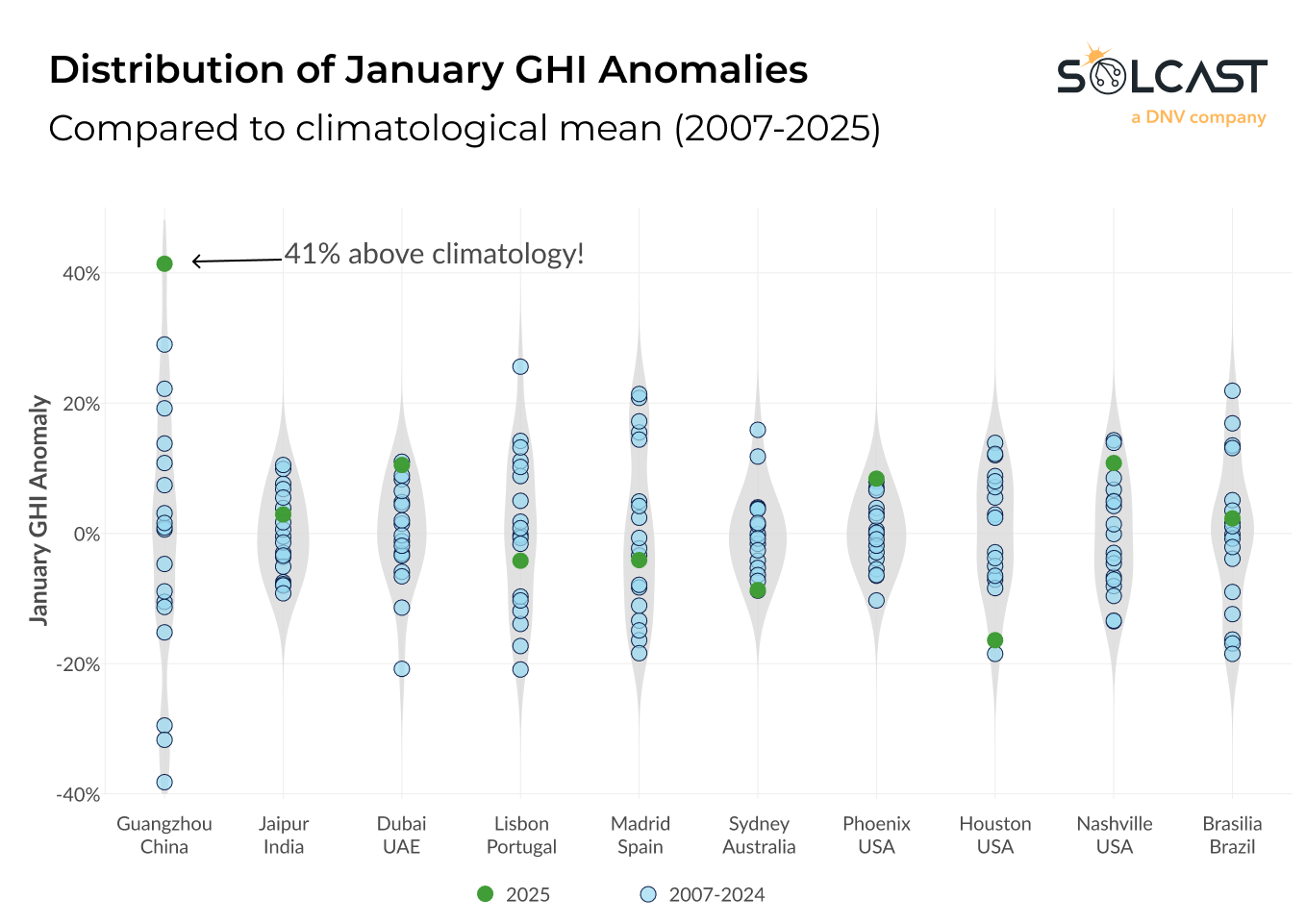
.png)
Drivers behind China’s record January solar irradiance
These anomalies were primarily driven by two key factors. The dominant factor was a La Niña circulation pattern that disrupted the usual Pacific airflow and resulted in reduced warm and moist air. Instead, cooler and drier conditions prevailed, suppressing convective cloud formation and leading to widespread clear skies. The reduction in cloud cover also coincided with below-average rainfall totals for the season, reinforcing the dominance of high-irradiance weather patterns.
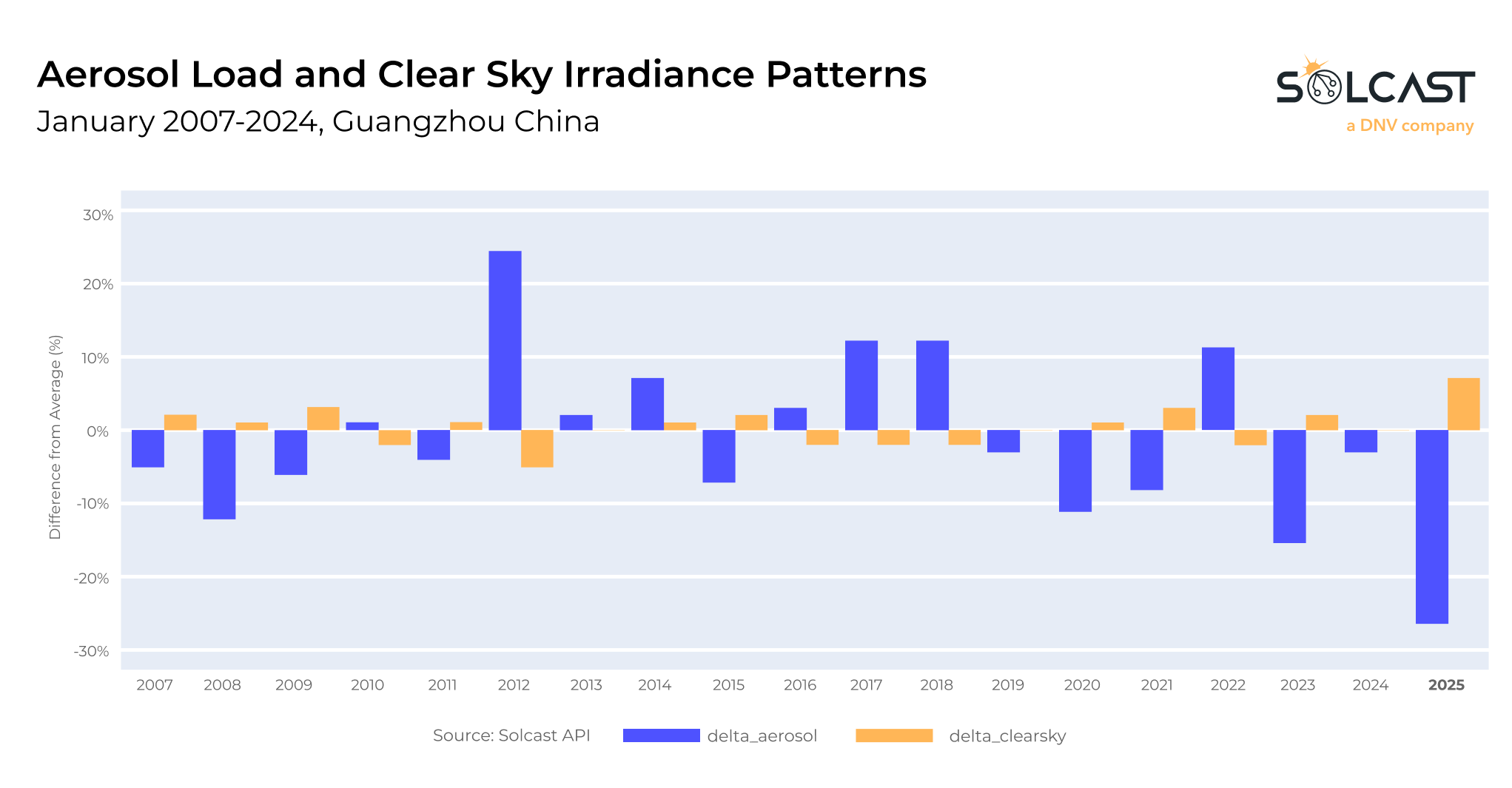
Compounding the impact of clearer skies, atmospheric aerosol loads were significantly lower than typical for January. Solcast API data shows that in Guangzhou, aerosol optical depth values dropped over 20% below the 20-year January average. With fewer particulates present to absorb or scatter incoming solar radiation, clear sky irradiance levels increased measurably. This reduction in aerosols alone contributed more than 5% to the irradiance anomaly observed in Guangzhou.
This dual boost from La Niña-induced dryness and reduced atmospheric pollution delivered some of the most favourable solar conditions recorded in two decades across the region. The long-term trend of falling PM2.5 levels across Chinese urban centres, as identified in peer-reviewed literature, has likely enhanced this year’s anomalous effect.
Maximise high-irradiance solar conditions with accurate solar forecasting
January’s record-breaking irradiance in China shows why high-resolution solar data matters. With granular forecasting and a clearer understanding of drivers like aerosols and cloud cover, you’ll gain the insights needed to make faster, smarter decisions especially when conditions are favourable. The Solcast API delivers the detail required to optimise forecasting, dispatch, and performance benchmarking during high-irradiance periods. Talk to our team to learn more, or evaluate the Solcast API via the commercial toolkit.








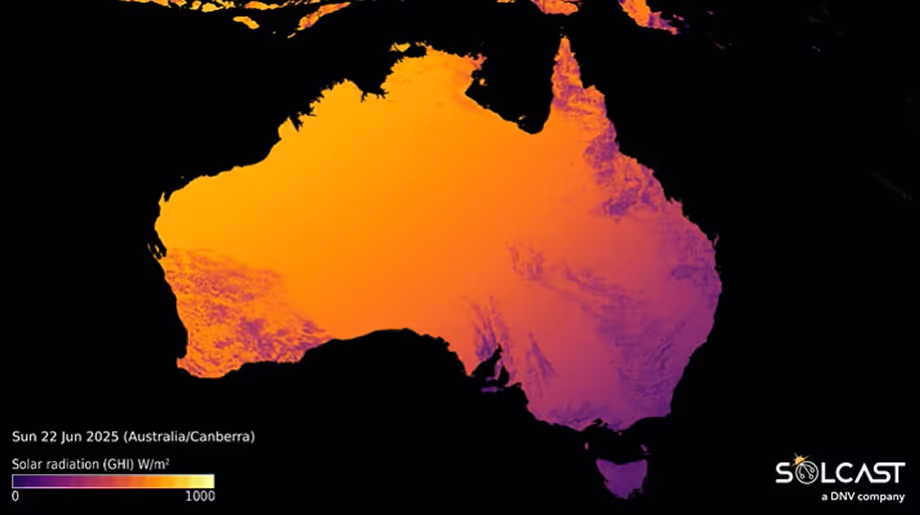
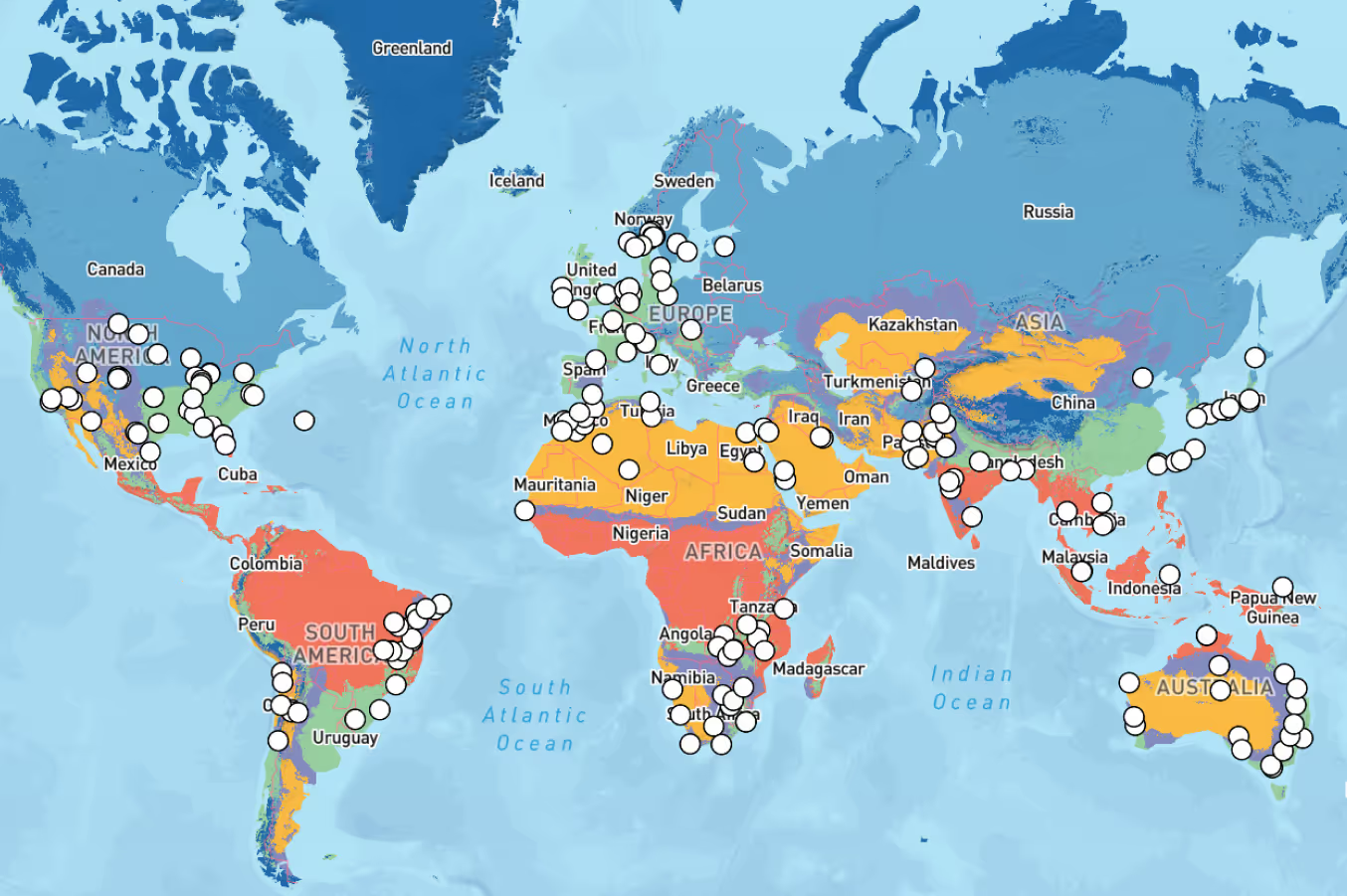
.avif)
